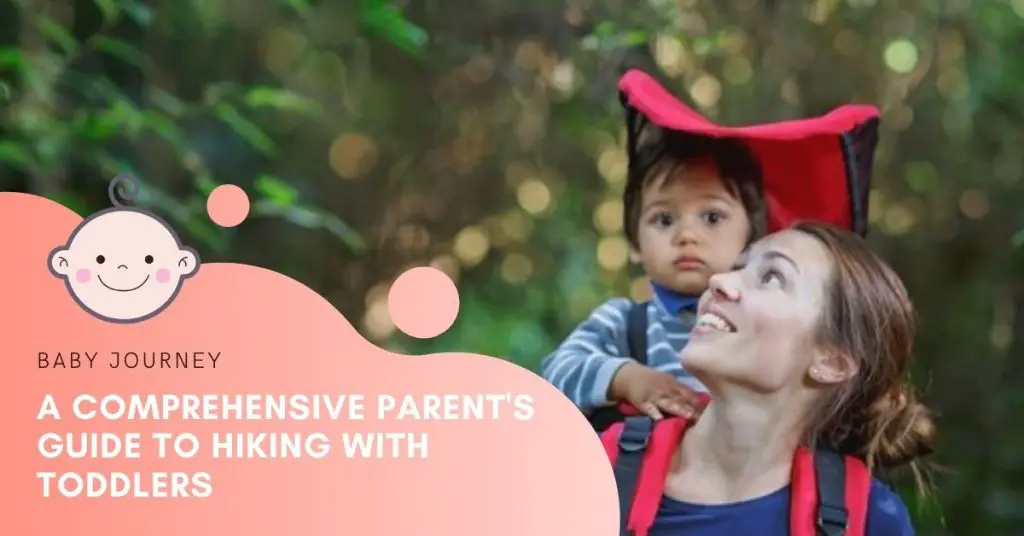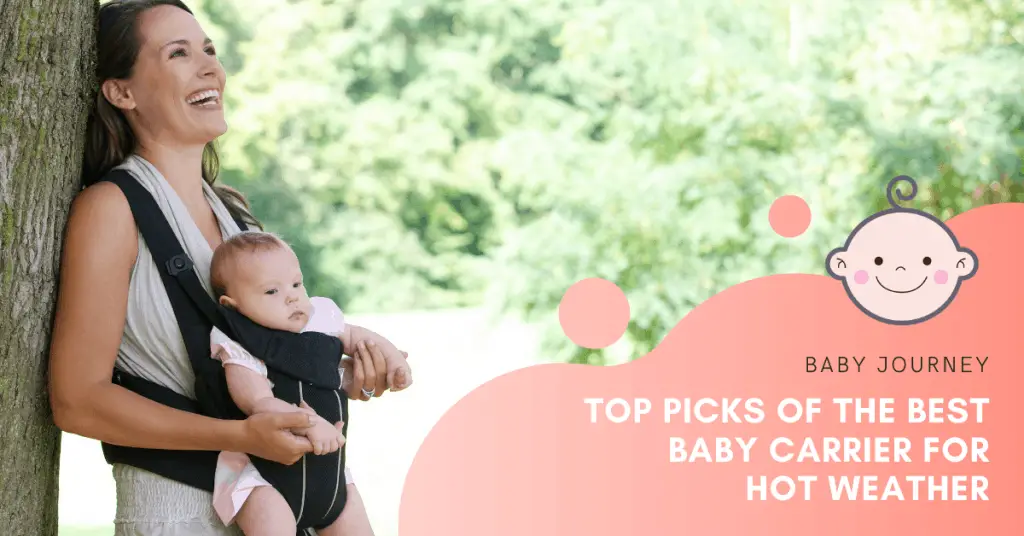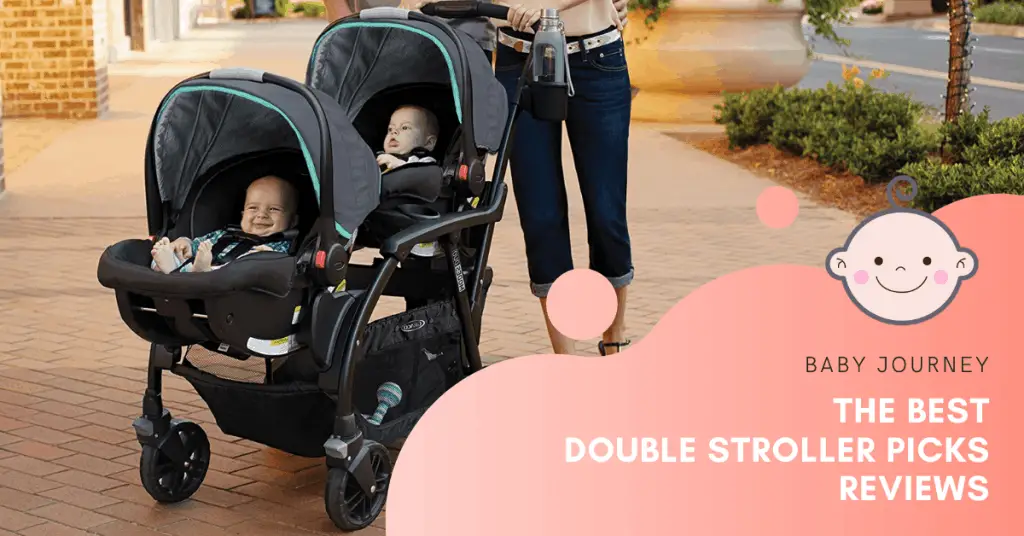Are you planning a trip that will involve hiking with toddlers? That is amazing! Getting out into the great doors is a wonderful way to bond with your family and engage in healthy habits.
However, before you hit the trail make sure that you are adequately prepared and have a good understanding of how to hike with a toddler!
While it can be a little challenging, all the memories you make will definitely make it worth it. Our ultimate guide will include helpful information on toddler hiking gear, how to plan and prepare for your trip, and whether or not to use a hiking carrier for a toddler.
We will cover all you should know and more, so you can have the best trip possible with your child.
When Should I Start Hiking with My Toddler?
I have hiked with all my children from a very young age. As soon as they could go in a carrier in fact! Hiking with a baby is often referred to as infant packing because you carry them the entire time.

As your child ages, hiking with children becomes much easier! Though you can still use a toddler hiking carrier, your child will now be able to walk and explore on their own. Hiking together as a family has all sorts of benefits, including:
- Physical activity
- Exposure to the outdoors and wildlife
- Building self-confidence
- Family bonding
- Practicing eco-consciousness
Before you and your family can reap the rewards of hiking with kids, there are a few things you must know.
Hiking With a Toddler 101
It sounds simple. Bring your child to a hiking trail and off you go. Though if you want to have a pleasant trip, you need to make the proper preparations and have a plan.
#1 Bringing a Hiking Carrier
Whether or not you need a toddler carrier for hiking depends on your little one’s age. For your child, walking around the flat sidewalks of your neighborhood is very different from hiking a trail. Consider their abilities and strength.
Children ages 0-12 months will need to be carried the majority if not the entire way. If your child is between 1 and 4 years old, they will likely want to be carried some of the time. This is known as the half-carry/half-hike stage.
After 4 years of age, most children should be able to walk on their own for the duration of the hike.
Having a hiking carrier can be very useful for when your kid needs a break, you have to traverse difficult terrain, or you just want them within reach. You can wear a soft-structured carrier with children under 25 pounds.

When your child can sit upright unassisted you may prefer a structured hiking backpack. Hiking backpacks are often easier on the parents’ back and shoulders, contain pockets for storage, and have some nice features like a canopy.
Whatever carrier type you choose, be sure to test it out a few times before your trip.
#2 Planning Your Hiking Schedule Around Nap Time
Speaking of carriers, when you carry your infant or child while hiking, the movement of your steps often lulls them to sleep- which isn’t a bad thing! However, if you plan on making your toddler hikers walk, you need to think about their sleep schedule and stamina.
You have two options. The first is to plan to hike during your child’s naptime and that you will carry them in a hiking backpack or carrier to make this happen.
The second option is that you will stop and let them sleep at their regularly scheduled nap time. While they are taking a snooze, you can either have a snack or take a break too.
Scheduling hiking intervals around your little one’s rest schedule may not allow you to cover the most miles or be the most practical, but it is the most sensible. Hiking with a cranky toddler is no fun.
#3 Motivating Toddler Hikers to Walk
Encouraging your child to actually do most of the hiking can be rewarding both for you and them. It helps them to build strength, agility, and confidence. Making them walk also means that you don’t have to carry additional weight.
However, don’t plan on winning any races if your toddler is walking. Their much shorter legs will often have a difficult time keeping up. They also won’t have the strength and stamina that we adults have, meaning you will need to go at a slower pace and take frequent breaks.
Offer plenty of encouragement to your little ones and don’t pressure them to hike faster or further. When hiking with toddlers, it is about the journey and not the destination.
Rediscover your inner child and enjoy spending time with them in nature; you will probably find yourself amazed at their wonder!
#4 Finding Toddler-Friendly Terrain
Before you set off for a hike, do your research. Check out the trail’s difficulty rating and length, see what other reviewers have to say, and look at plenty of maps. Doing your homework will make sure your hike is enjoyable and safe for everyone.

Doing your research on trails you plan to hike is very important. You need to find the perfect trail to take your child on. This means it shouldn’t be too long, have too difficult of terrain, or be dangerous.
It goes without saying that you should stay away from fast-moving rivers or mud, very rocky areas that are prone to shifting, sheer cliffs, or very steep inclines or declines.
When you are just beginning to hike with your toddler you may even want to try a paved trail. As your little one progresses in their abilities you can choose more traditional unpaved hiking trails.
#5 Being Prepared & Thoroughly Planning
Though you can do your due diligence finding the perfect trail, if you don’t plan and prepare you might not have an enjoyable trip.
Spend time reviewing hiking and packing lists. Think through various scenarios. And, consider your child’s distinct needs and preferences. What you need to pack largely depends on where you will be hiking and the season.
You will need different items for various climates and weather events. Having toddler-size gear, especially for more serious hikes, will make the trip much more successful.
For example, if you are hiking in the cooler months be sure to have Thinsulate mittens in a toddler size and a toddler thermal. Only bringing your toddlers regular clothing and gear but not specialized equipment could set you up for failure.
If you are going fair-weather hiking, you won’t need as much. For short, easy trips you may not even need to invest in toddler hiking boots.
But if you plan on hiking frequently, going long distances, or tackling rigorous trails, invest in some excellent toddler hiking gear that can be enjoyed and then handed down to siblings.
#6 Planning For Breaks and Pit Stops
Adults can hike for hours on end; eating on the go and only stopping to rest occasionally. The same cannot be said for toddlers.
As mentioned, you may need to stop for a nap or rest time. Additionally, there are plenty of other reasons why you should plan on taking frequent breaks when hiking with your toddler.
Toddlers like to snack often and usually have many small meals throughout the day. They will not be as well versed or eating or drinking on the go, so factor in snack and meal breaks. Potty breaks will be equally as important and as frequent.

Having a destination in mind can help motivate your little one to keep moving. Nevertheless, they may see cool things along the way they want to explore. Kids often want to climb a few rocks, clamber up to a lookout, or just take a closer look at something.
Knowing that your hike time from point A to B could double is essential for planning your trip. Don’t try to do too much in one day. Instead, slow down and relax, enjoying the more restful pace.
#7 Having Proper Hiking Supplies
As a rule of thumb, you will need your typical hiking supplies plus all your regular toddler supplies. This means that your hiking backpack should include a water bottle, snacks, and sunscreen as well as diapers, wipes, and maybe even a small lovey.
You don’t want to be carrying a ton of weight, so make each item count. The necessities should go into your pack first. If you have room and can take more weight, you can then add additional items that would make the trip more enjoyable but aren’t necessary, like a portable radio.
Packing extra clothing items for your child is also a great idea! Having dry clothes, especially socks, is vital when hiking. If there are puddles or a river on the way, plan on your child wanting to explore and subsequently getting wet.
One fun way to help carry all the necessary supplies is by using a toddler hiking backpack. A hiking backpack for a toddler should be small and light. You don’t need to fill it, but instead, simply unload a few of your items into their back.
Letting them carry their own water, a snack, and maybe their lovey can help give them a sense of responsibility and let them feel grown-up. As they age you can add more items to their children’s hiking backpack.
#8 Keeping Things Fun and Enjoyable
Planning to include exciting sights and fun stops along your hike is a wonderful way to keep children happy while on the trail. Another tactic you can use is playing outdoor games. Games will help keep their minds off the steady walking and make the trip more pleasant.
You don’t need any special tools or supplies for the games, just your imagination! You can play classics like Follow the Leader, Simon Says, or I Spy. You can also invent new games.
Some of our favorites include:
The Alphabet Game. Challenge your child to find something that begins with each letter of the alphabet. Such as “B” for bird or “S” for stone.
Scavenger Hunt. Find an item, like a pinecone, and ask your little one to find a matching or similar item. Alternatively, you can print out a list before you leave home and have them check off boxes as they find things.
Races. Most children love competing in timed trials. Count how many seconds it takes them to reach a tree, a stump, or a fork in the trail. Can they beat their time by racing a similar distance to the next location?
With some of these games, having hiking safety rules ingrained in your child’s mind is vital. We will talk more about this soon!
#9 Having a Backup Plan for Surprise Element
Unfortunately, even the best-laid plans can sometimes go awry. Inclement weather, trail closures, and more can all threaten to derail your hike. Having backup plans for these types of situations can help.
If you are through hiking, you may just need to set up camp and wait it out if there is a rain shower or snow squall. If the trail is closed, work with local rangers or outdoor guides to find a new route.
If you are on a short hike or arrive at your day-hike location only to find that hiking is not possible, don’t fret. You may be able to find a new trail. Alternatively, you can probably pull up a map and find something else fun for your child to do.
Occasionally, sometimes it isn’t the weather or unforeseeable events that can cause a surprise but rather your child. Bathroom accidents, playing in a puddle, and even a trip may cause a hiccup in your hike.
Packing the necessary supplies, like a first aid kit and a change of clothes can help you quickly solve the problem and keep on trekking with your little one!
Hiking with Toddlers Packing Checklist
There may seem like an endless list of things you need to pack to be prepared for every situation. But you are likely overthinking things! To help, here are our top ten must-haves when hiking with a toddler.
- Water
- Snacks
- Bug spray / Sunscreen (depending on weather)
- First aid kit
- Hat
- Phone
- Diapers & wipes (toilet items)
- Safety whistle
- Plastic bag
- Extra clothes
Keep in mind, this can be used for all types of hikes. However, if you are going on more than a short, fair-weather hike you will need more specialized gear.
Safety Precautions You Should Know When Hiking with Children
It is extremely important that your child know and follow basic safety rules when hiking. This will keep them and others safe while on the trail.
- Always stay within sight. They do make toddler backpacks with a leash if your little one is prone to running off.
- Always carry your safety whistle. A safety whistle is a hiking must-have when hiking with kids. In many cases, the whistle is attached to a bracelet, necklace, or keychain.
- Teach your child that if they ever become lost: stop, don’t move from their spot, and blow their whistle until help arrives.
- Knowledge about poisonous plants and animals. In general, teach your kids the rule of “look, don’t touch”. This goes for flora and fauna as well as natural elements like rivers.
Common FAQs About Hiking with Toddlers
Is it safe to hike with a toddler?
As long as you and your child are both prepared with adequate gear and knowledge and choose an adequate trail, it is safe to hike with a toddler.
How far can a toddler hike?
How far your little one can hike depends on their age, skill, and endurance. To figure out how far your little one can hike, take them on somewhat easy and short hikes at first, then progress them in length and difficulty.
What is a toddler-friendly hiking trail?
A toddler-friendly hiking trail is relatively flat, has easy-to-hike terrain, enjoyable elements to stop and look at, and plenty of access points to your car or camping site.
Related: Camping with a Baby
Should I buy special hiking gear for my toddler?
Unless you plan to do long and rigorous hikes, special gear probably isn’t necessary. If you do buy specialized toddler hiking gear, be sure to invest in high-quality products that can be handed down to siblings.
How do I make hiking with toddlers fun and interesting?
Hiking with toddlers is all about keeping them entertained and not thinking about the monotony of walking. Play games, stop and see cool sights, and enjoy bonding time!
Have a Happy Hike!
Well, there you have it! A complete guide on how to get out and hike with your toddler. Whether you plan to use toddler carriers for hiking or make them hike on their own, planning and preparation are key. We recommend doing a few short test hikes close to home before tackling any big trips.
If you have any more questions let us know in the comments! Hopefully, you feel prepared to get out on the trail with your toddler.
—




